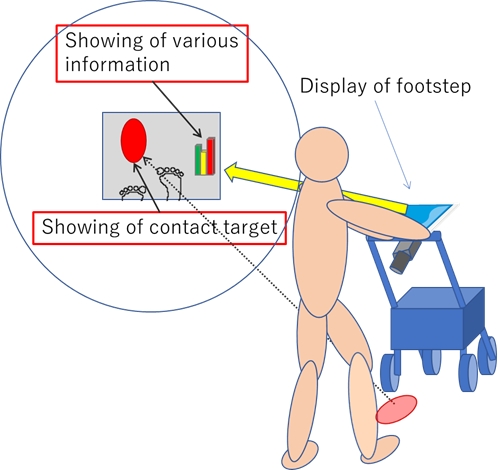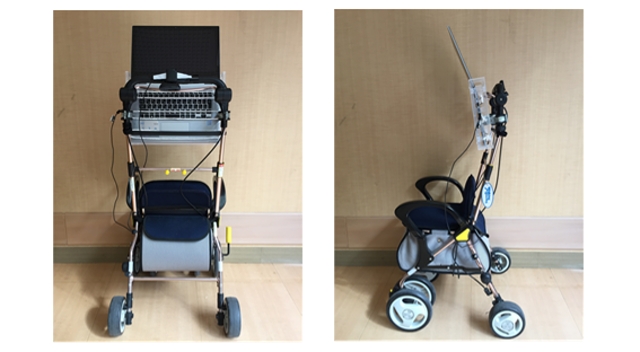Development of a Gait Training Device using a Walker with Visual Feedback Function
Walking is a very complex movement and requires an elevated level of physical ability. At the same time, it is an important ability to lead an independent life. Gait training is an essential training for rehabilitation from lower body disability caused by cerebro-vascular damage, lower-limb fracture, and so on. However, gait training using parallel bars is difficult and painful and also requires a lot of strength in the upper limbs.
slinging mechanism training system is a relatively safer training method without burdening the upper limbs. Several devices with slinging mechanisms have previously been proposed in past studies and have demonstrated the effects of the devices in locomotor therapy.
These devices support the trainee’s weight to relieve the loads placed on the trainee’s legs. The training is thus safer and the trainee is less likely to experience physical pain. However, one of the key points to be noted during rehabilitation using mechatronic machines is that the results are much better than traditional rehabilitation techniques. These devices may cause a secondary effect, which is an increase in the training time because of pain alleviation and effective coaching by the therapist because of reduction of incidence.
We developed a reaction force feedback-type gait training system. The main feature of this system is that it can provide constant dynamic adjustment of the tension lifting the trainee based on the information from a ground reaction force. This system has a display that shows the feet of the trainee. It shows the overlay picture with the foot contact point and the target contact point. The trainee can thus always confirm that the current foot contact point matches the target contact point. The visual information of the difference between the target and actual contact points stimulates the brain and encourages the trainee. This phenomenon is called visual feedback function.
Ohnishi et al. reported an example of improvement in upper limb function using an upper limb rehabilitation device1. This device was developed for patients with cervical spinal cord injuries. The patients recognized the movement of the upper limb based on the visual display showing the target and current positions. This brain stimulation technique was also found to be effective.
The gait training system proposed by us has a visual feedback function as well. However, the demonstration of the utility of this system is difficult because this system is too large to install in rehabilitation institutions for clinical test.
Therefore, we developed a gait-training-device-based “walker” to demonstrate the usefulness of the visual feedback function and to decrease device cost. The “walker” (walking frames with brakes, front swivel castors, seats and baskets) can include the effective walking support tools for both indoor and outdoor applications. Walkers, in general, not only offer agility and stability, but also seats to rest one’s foot and baskets for baggage.


- K. Ohnishi, E. Goto, F. Sugiki, K. Imado, H. Ikeuchi, N. Kito, H. Miyagawa,and Y. Saito, Home-Use Upper Limb Rehabilitation Device for Cervical Spinal Cord Injured Patients , ICCHP 2004 Proceedings, 2004, 880-888